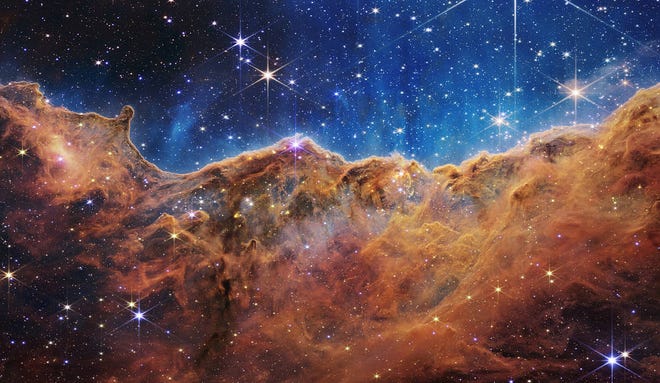
The Florida Department of Astrophysics has made progress since the December 12 launch of the James Webb Space Telescope. On January 25, 2021, three professors at FSU have begun their first observational cycle of research.
When NASA launched the James Webb Space Telescope last Christmas, there was little assurance that it would reach its destination safely. After a million miles of travel, the telescope must still be carefully deployed from its stowed launch position, cooled to below minus four hundred degrees Fahrenheit, and calibrated for its first observations.
Still, NASA scientists are well-positioned to make this feat of engineering look easy.
In Tallahassee, the Challenger Learning Center hosted a viewing party to celebrate NASA’s July 12 release of the telescope’s five first images.
Jeremiah Murphy, a professor of astrophysics at FSU, who was present at the meeting, said he felt “emotional, and in a sense, it was good.”
“It’s great to see this decades-long project finally come to fruition,” Professor Murphy said. “In the community, we realized that this thing could go wrong.”
Professor Murphy is not just an ordinary audience. Instead, he watched as one of three astrophysics professors at FSU who were selected as the first observers to use the newly minted space telescope.
Because the James Webb Space Telescope is such a powerful scientific tool and its useful lifespan is limited, its operators in Maryland must go through a lengthy prioritization process to determine whose proposals will receive observation time.
According to NASA, the proposals used by Webb “are judged by a peer-review system where a team of independent scientists will rank observational proposals based on scientific merit and select the highest-ranked proposal.”
As a new research discipline established in 2006, it’s worth noting that Florida State University’s astrophysics group gained time during Webb’s first observation cycle. The success is reminiscent of FSU’s 1990 proposal to create a National Magnet Laboratory that defeated MIT’s proposal, and illustrates the university’s focused efforts to become a premier research institution.
“We made a good case, and we really beat competing groups from Harvard, the West Coast and the East Coast, and could really put FSU near the top,” said Professor Peter Hoeflich. This proposal, submitted with Professor Eric Hsiao, will study Type Ia supernovae.
All three professors are using Webb to see the myriad ways a star explodes (or begins, before it collapses itself). The James Webb Space Telescope is powerful enough to see the explosion of stars that occurred at the beginning of the universe 13 billion years ago.
“You’re looking at very, very distant targets, trying to catch these first supernovae,” Professor Xiao said. “That’s another unknown that Webb can answer, which is what these things look like. Because the first generation of stars won’t be what we are today.”
According to Prof. Hoeflich, “The goal is to be competitive and stay competitive. Our goal is to really have a lean, average team where we can leverage all our multi-billion dollar investments. For our students to come Say, it’s basically perfect. It’s really a training ground.”
Professors Hoeflich and Hsiao have triggered their observations of Webb, beginning a process in which Goddard Space Institute controllers will command a tennis-court-sized telescope and point it at what they want. star system. Professor Xiao described the supernova they were observing as “actually in our backyard”.
“It’s in another galaxy,” he said. “That means millions of light-years away, but you know, it’s nearby for us.”
For more information about the FSU Astrophysics Program and how to get involved, visit https://astrophysics.physics.fsu.edu/.